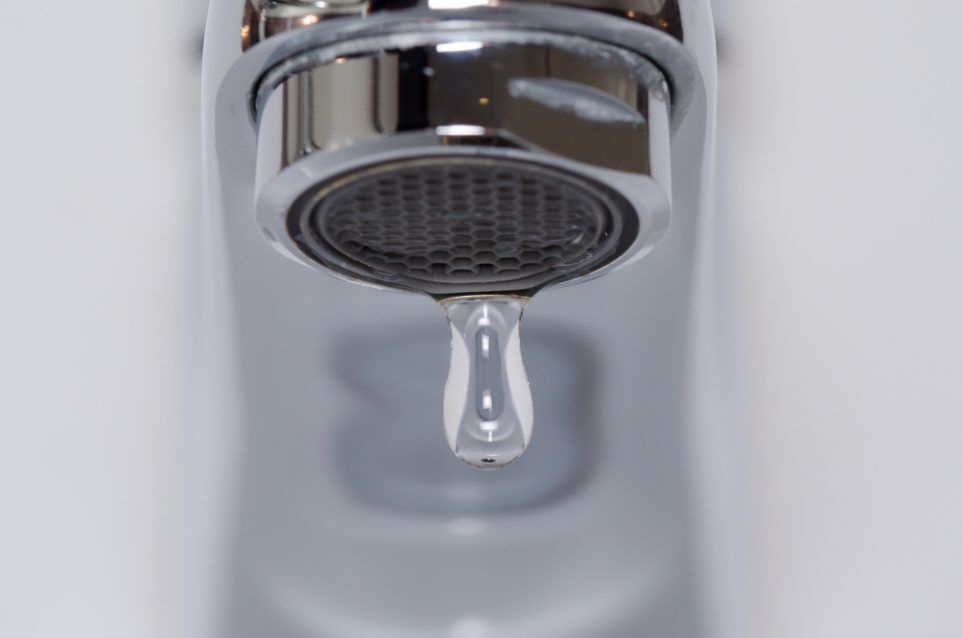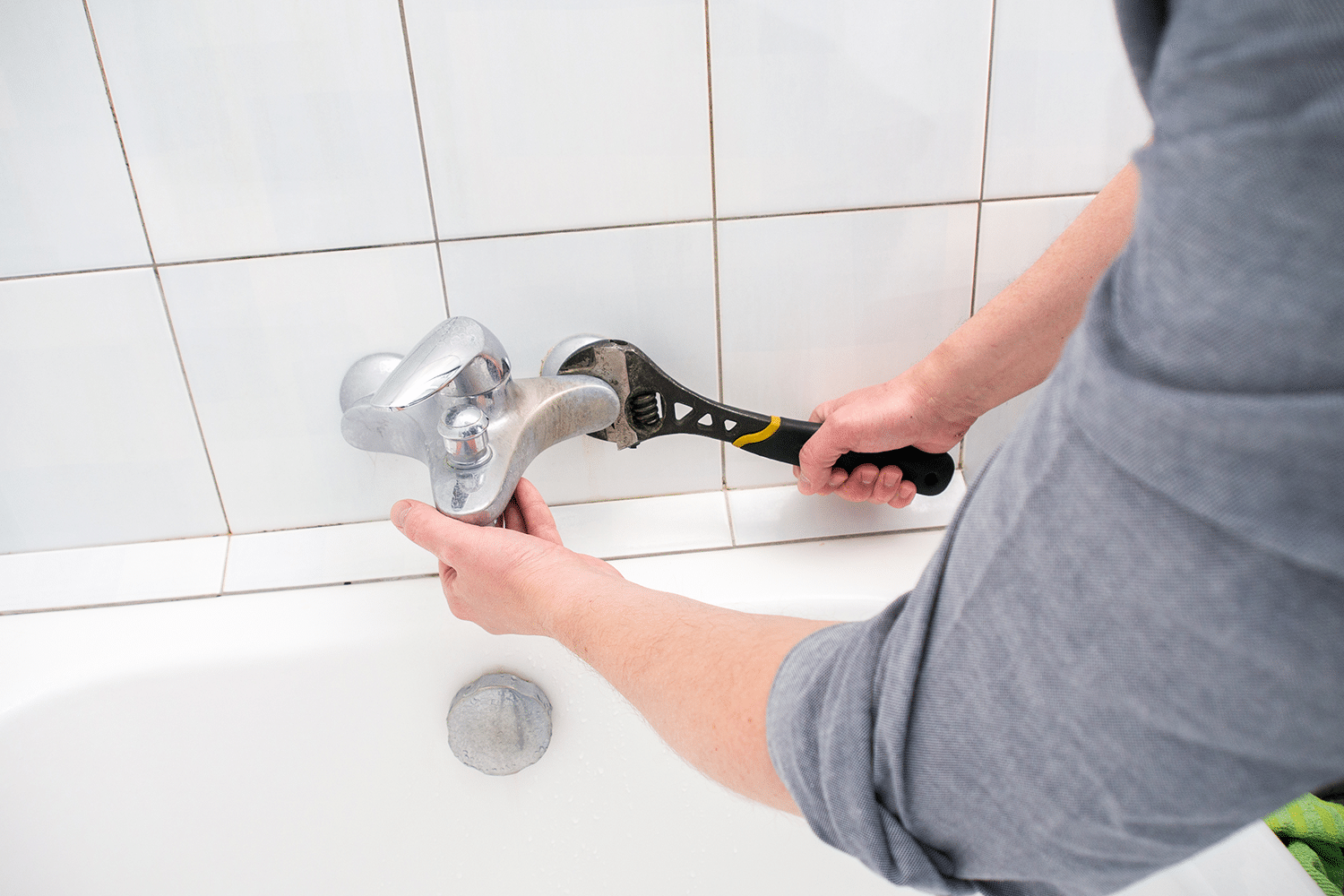Causes Why It's Important to Repair a Leaking Faucet
Causes Why It's Important to Repair a Leaking Faucet
Blog Article
The article author is making several great pointers about What Causes Leaky Faucets & How To Fix Them as a whole in this article below.

Dripping faucets may feel like a small trouble, but their effect goes beyond simply the aggravation of the sound. From wasting water to incurring unneeded financial costs and health threats, ignoring a trickling faucet can bring about numerous repercussions. In this short article, we'll delve into why it's vital to address this typical family problem without delay and properly.
Wastefulness of Water
Ecological Influence
Dripping taps add considerably to water wastage. According to the Epa (EPA), a solitary faucet trickling at one drip per second can lose more than 3,000 gallons of water annually. This not only strains water resources but likewise impacts communities and wildlife dependent on them.
Step-by-Step Overview to Repairing a Dripping Faucet
Devices Needed
Prior to trying to fix a leaking tap, gather the essential tools, consisting of a flexible wrench, screwdrivers, substitute parts (such as washing machines or cartridges), and plumber's tape.
Common Faucet Issues and Their Solutions
Recognize the type of faucet and the details problem triggering the drip. Common troubles include worn-out washing machines, rusty shutoff seats, or defective O-rings. Refer to maker guidelines or on-line tutorials for detailed advice on repairs.
Financial Prices
Raised Water Costs
Past the ecological effect, leaking faucets can blow up water costs considerably. The gathered waste in time translates into higher energy costs, which could have been stayed clear of with prompt repair work.
Potential Residential Property Damage
Furthermore, extended trickling can bring about damage to fixtures and surfaces bordering the tap. Water accumulation can cause discoloration, corrosion, and also structural problems if left unattended, leading to added repair service prices.
Health Issues
Mold and Mold Development
The constant presence of moisture from a dripping faucet creates an optimal atmosphere for mold and mildew and mold growth. These fungi not just jeopardize indoor air quality yet additionally posture health threats, specifically for individuals with respiratory conditions or allergic reactions.
Waterborne Illness
Stagnant water in trickling faucets can become a breeding place for germs and other virus, boosting the risk of waterborne illness. Contaminants such as Legionella microorganisms flourish in stationary water, potentially bring about serious ailments when ingested or inhaled.
DIY vs. Specialist Repair
Benefits and drawbacks of DIY Repair
While some may try to take care of a leaking faucet themselves, do it yourself repairs come with their own collection of challenges. Without proper expertise and tools, do it yourself efforts can exacerbate the issue or lead to insufficient repairs, extending the problem.
Benefits of Hiring an Expert Plumber
Employing a professional plumber makes sure that the underlying source of the dripping faucet is attended to efficiently. Plumbers have the expertise and tools to detect and repair tap problems successfully, conserving time and reducing the danger of additional damages.
Environmental Responsibility
Specific Contribution to Preservation
Taking duty for fixing trickling taps aligns with broader efforts toward water preservation and environmental sustainability. Every person's activities jointly make a considerable impact on maintaining valuable sources.
Sustainable Living Practices
By prioritizing punctual repair services and adopting water-saving behaviors, people contribute to lasting living methods that benefit both existing and future generations.
Safety nets
Regular Upkeep Tips
To stop trickling taps, perform routine maintenance such as cleaning aerators, examining for leaks, and replacing damaged parts immediately. Furthermore, take into consideration mounting water-saving tools or updating to extra effective components.
Relevance of Prompt Services
Addressing leaking taps as soon as they're observed prevents more water wastefulness and prospective damage, eventually saving both water and money in the long run.
Effect On Home Value
Perception of Well-Maintained Property
Maintaining a home in good condition, consisting of dealing with upkeep issues like trickling taps, boosts its perceived value and desirability amongst prospective buyers or tenants.
Influence on Resale Worth
Residences with well-kept plumbing fixtures, consisting of taps, command greater resale values in the real estate market. Dealing with leaking faucets can contribute to a favorable impact during property evaluations and negotiations.
Conclusion
Addressing a leaking faucet surpasses mere convenience; it's a necessary step toward conserving water, reducing economic expenses, and safeguarding health and wellness and home. Whether through DIY repairs or professional assistance, doing something about it to repair trickling taps is a small yet impactful method to promote accountable stewardship of sources and add to a much healthier, a lot more sustainable future.
How to Fix a Leaky Faucet: Step-by-Step Repair Guide
A leaky faucet may seem like a simple annoyance, but if it's not fixed promptly, that leak could cost hundreds to potentially thousands. From water damage to mold, mildew, and high water bills, even a tiny leak can be catastrophic if left unattended. Damage like this can even affect the overall value of your home, so it's important to take the right approach for leaky faucet repair. You may need the help of a plumber in some cases, but we've got a few tips you can try on how to fix a leaky faucet before calling the pros.
Four Faucet Types
When you're learning how to fix a leaky faucet, the first step is knowing what kind of faucet you're working with! There are four common types.
Cartridge Faucets
Cartridge faucets come in one- or two-handled varieties. In one-handled cartridge faucets, hot and cold water combines in a single cartridge. In the two-handled versions, hot and cold water are controlled separately and mixed in the faucet.
Ball Faucets
Ball faucets have a single lever you push up and down to adjust the pressure and rotate to change the temperature. A slotted metal ball controls the amount of water allowed into the spout.
Compression Washer Faucets
They're the oldest type of faucet, but they're still used in many homes — especially older ones. Compression faucets have two separate handles that, when turned, raise or lower the washer that seals a water valve. This valve stops water from flowing through the faucet when it is turned off.
Disc Faucets
Disc faucets rarely need to be repaired due to their maintenance-free design. The water flow is controlled by two discs — the upper one raises and lowers against a fixed lower disc, creating a watertight seal. If your disc faucet starts leaking, you may need to replace the seals or clean residue buildup from the inlets.
Fixing a Leaky Faucet
Step 1: Turn Off the Water
Whether you're learning how to fix a leaky bathtub faucet or how to fix a leaky kitchen faucet, always turn off the water supply to your working area when you're fixing a leak. The last thing you want is a flood added to your list of things to fix.
Look for the shutoff valves below your sink or around the tub and turn them clockwise to stop the water flow. If your faucet doesn't have shutoff valves, you may need to turn off the water for the whole house. Check to make sure it's off by turning the faucet on. If nothing comes out, you're ready to start the repair.
Step 2: Take Apart the Faucet
How you disassemble your faucet depends on the type of fixture you have. You can use a flathead screwdriver to remove the caps on top of the handle or handles for cartridge and compression faucets. Inside, you should see handle screws. Unscrew these with a screwdriver to remove the handle.
Disc- and ball-style faucets will typically have an inlet screw near the handle, and removing that will reveal the interior of the faucet.
Detach the Valve Stem
For cartridge- and compression-style faucets, you'll see the inner valve stem or cartridge once you remove the faucet handles. If you have a compression faucet, unscrew the brass valve stem. If you have a cartridge faucet, pull out the cartridge. If your cartridge has been in place for a while, it may require some tools or extra force to remove it due to mineral deposits.
Examine and Replace Parts
Once you've removed the parts, check them out to confirm what needs to be replaced. You may see corroded rubber washers, O-rings, stems, or cartridges. On a ball-style faucet, check the seats and springs for damage.
If you need to repair a leaky disc faucet, check the inlet and seals on the lower disc.
Once you determine what parts must be replaced, visit your local hardware store. Bring the damaged parts with you to ensure you can purchase the correct components to replace them.
Clean Valves and Faucet Cavity
If you've removed a stem or cartridge, you may notice mineral buildup in the faucet's threads. Use white vinegar to clean the valve seat by soaking it for a few minutes, then scrub it away with a soft toothbrush and rinse with warm water. You can also clean the interior of the faucet in the same way.
Reassemble the Faucet
Once your faucet is cleaned and the required parts have been replaced, it's time to reassemble it. Put the pieces back together and slowly turn the water supply back on. Doing this slowly is crucial because too much initial water pressure can damage the new hardware you've just installed.
https://homewarranty.firstam.com/blog/how-to-fix-leaky-faucet

As a serious person who reads on Why It's Important to Fix Leaky Faucets, I assumed sharing that post was a great idea. Sharing is nice. You just don't know, you could be doing someone a favor. Many thanks for going through it.
Report this page